How the ERCOT Market Responds to a Nuclear Trip
Looking at the data of how ERCOT maintains grid stability when a nuclear plant unexpectedly goes offline.
On July 24th, a nuclear unit in Texas unexpectedly tripped. What happens when a large generator suddenly goes offline?
Using data on Grid Status, we took a look at how pooled resources and advanced operational strategies help to prevent significant disruptions when shocks to the system occur.
All of the images and data below can be found on a dashboard available here.
7:02 AM: STP Nuclear Plant Trips
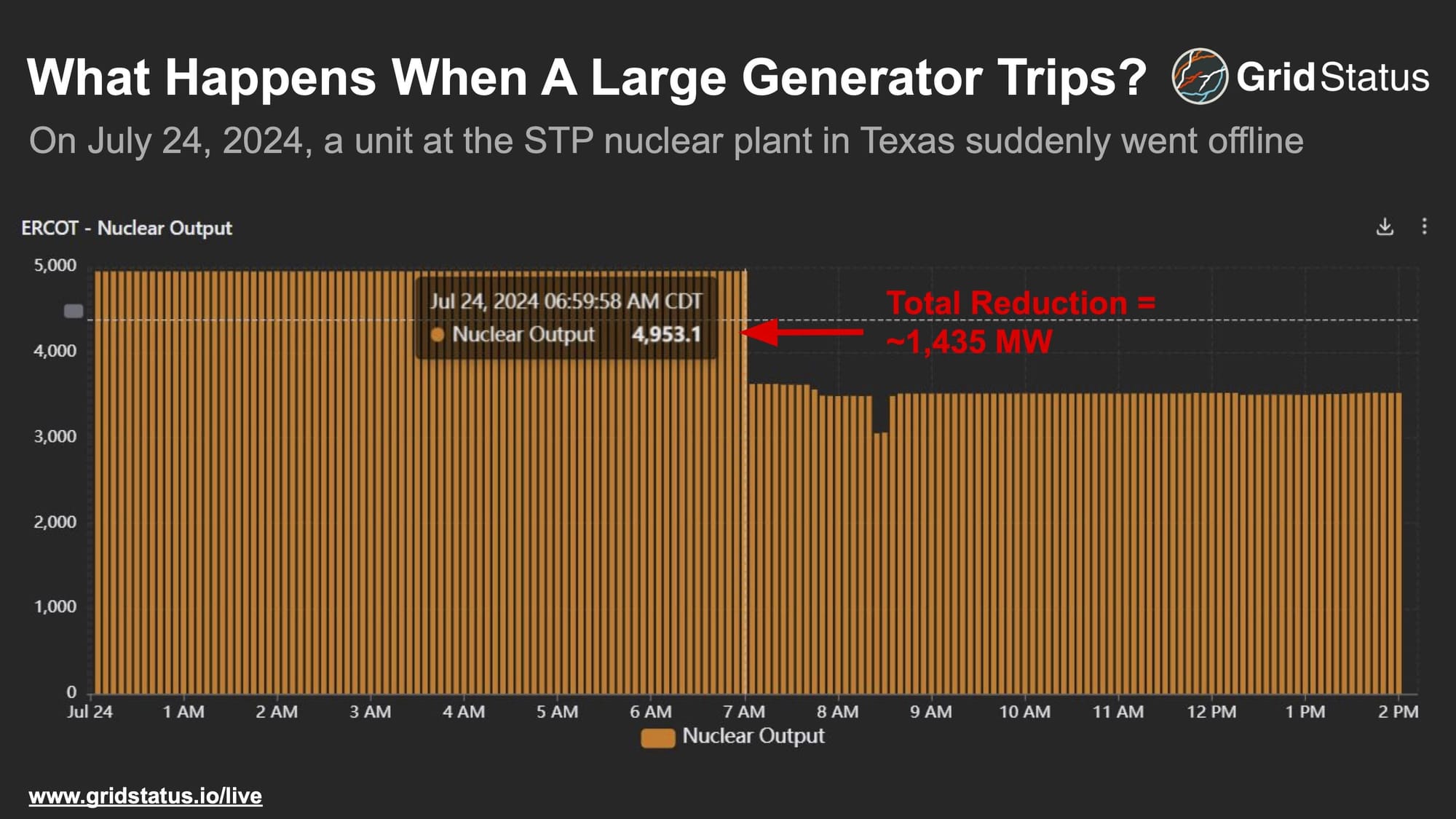
Immediately, grid frequency declined. An excursion below critical levels required a fast response by ERCOT to ensure stability of the grid.
Deviations in frequency from the acceptable operating band are a key driver of certain ancillary services. In this case, ERCOT needed to deploy a product with fast response times that could also be sustained if necessary.
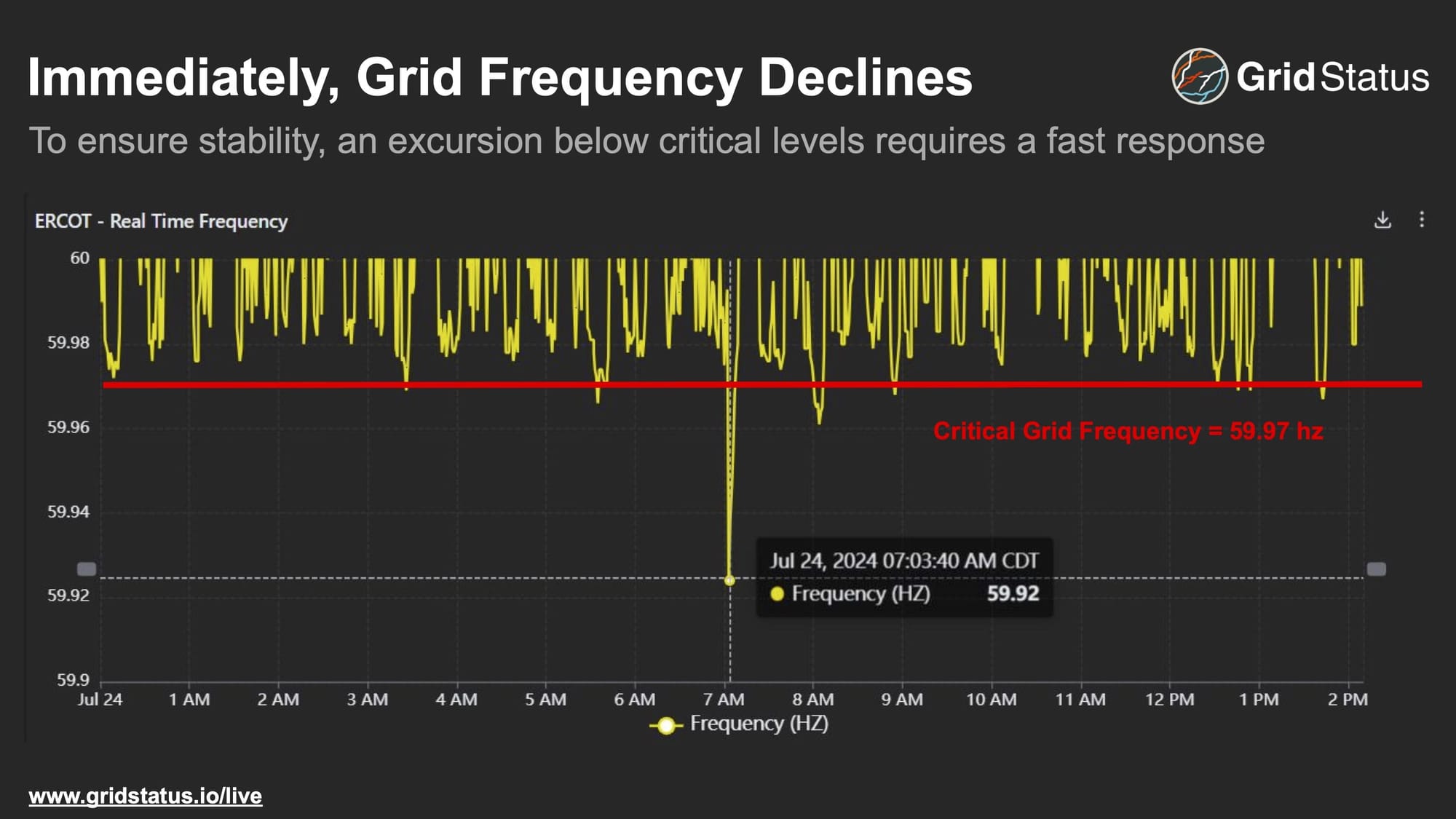
ERCOT swiftly deployed ancillary services, including their newest product, Emergency Contingency Reserve Service (ECRS). A significant amount of batteries were carrying ECRS at the time and could be seen responding to the deployment, helping to boost system frequency back to normal.
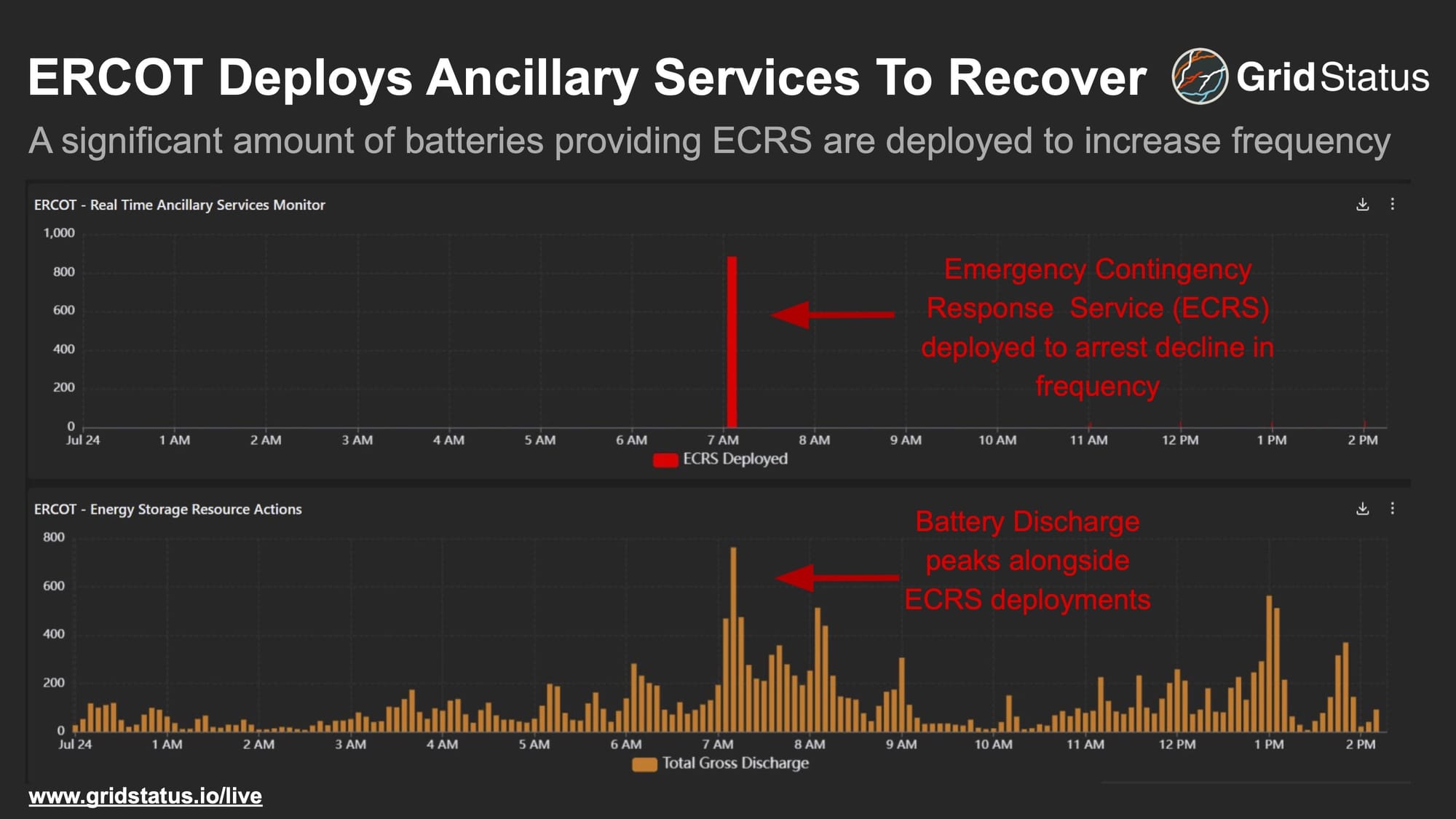
Prices rebalance generation
Electricity prices also responded shortly after the trip, although perhaps not in the direction someone would expect.
There was substantially negative price action at the STP nuclear plant, which helped identify it as the likely source of the outage. This delay in outlier price swings relative to the event was likely due to a combination of low load at the time and systemwide generation already ramping as Texas woke up. The system had significant headroom, and there was no localized congestion in SCED immediately following the trip. As load continued to increase and ancillaries were deployed in the immediate aftermath of the trip a few extremely negative intervals ended up being part of the solution to reconfigure output on the grid. We do not have insight into minute-by-minute operator actions, so think of this as a substantial oversimplification informed by experience and a “best guess” approach.
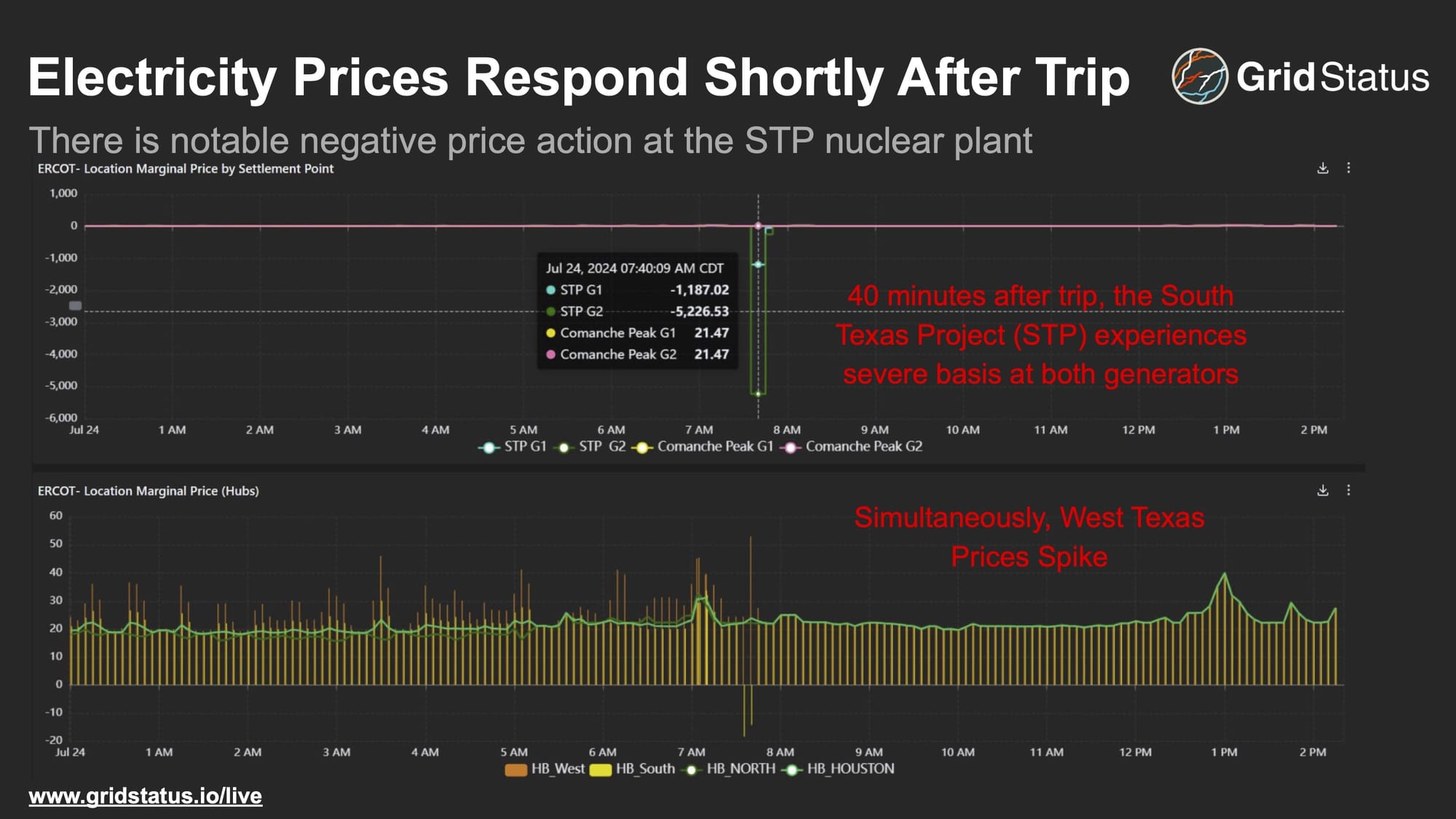
To compensate for the outage, generation had to be rebalanced to accommodate the limitations of the transmission system under a new scenario without the output from STP Unit 1. Price signals then reconfigured the generation output in West Texas at 7:40am CT, causing some units to increase output and some to curtail.
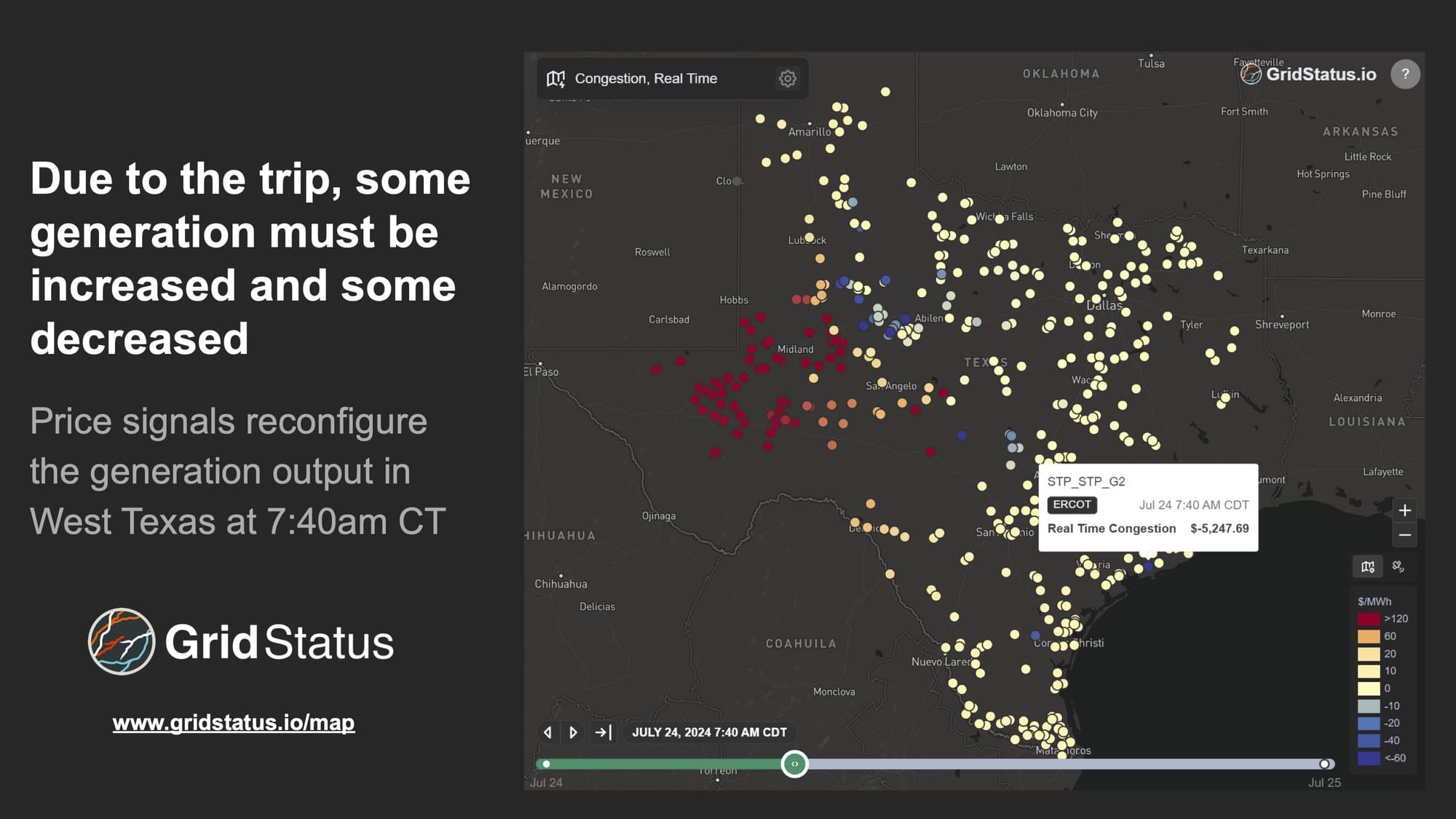
Confirmation from NRC
By the morning of July 25th, the Nuclear Regulatory Commission (NRC) confirmed that Unit 1 of the South Texas Project tripped following an event at 7:02 AM CT on 7/24/2024. This occurred due to a fire at the plant’s switchyard. As a result of the fire, Unit 1 lost offsite power and tripped. Unit 2 was also brought down to 90% output.
This confirms our suspicion from the events on ERCOT’s grid yesterday that the lost unit was at STP, and provides another example that all generators are at risk of outages, no technology is 100% reliable and no single point of the grid should be assumed to be completely dependable. Reliability and dependability comes from meticulous planning and maintenance to help keep the massive machines we call grids running 24/7.
This analysis utilized just a small sample of the data and tools available on Grid Status. If data like this is important to you, our site can be used for further review. With a free account you can track events like this in real-time across North America.

